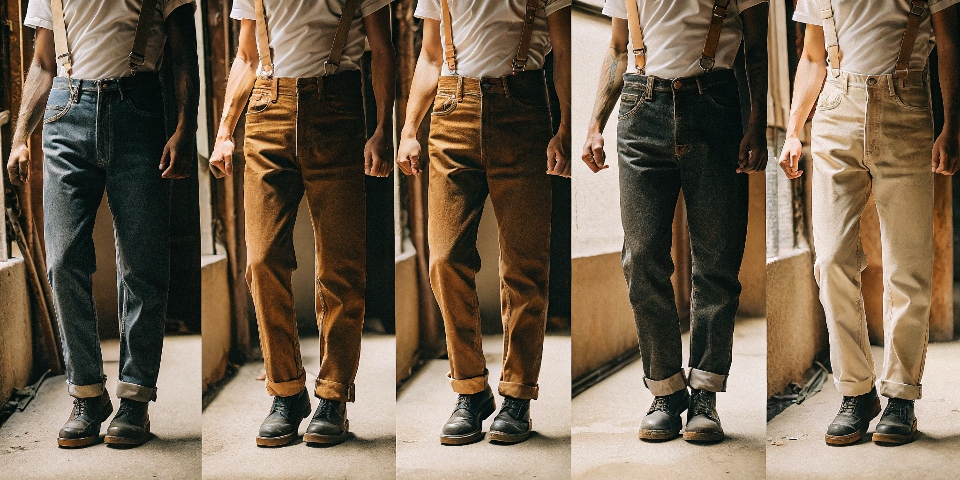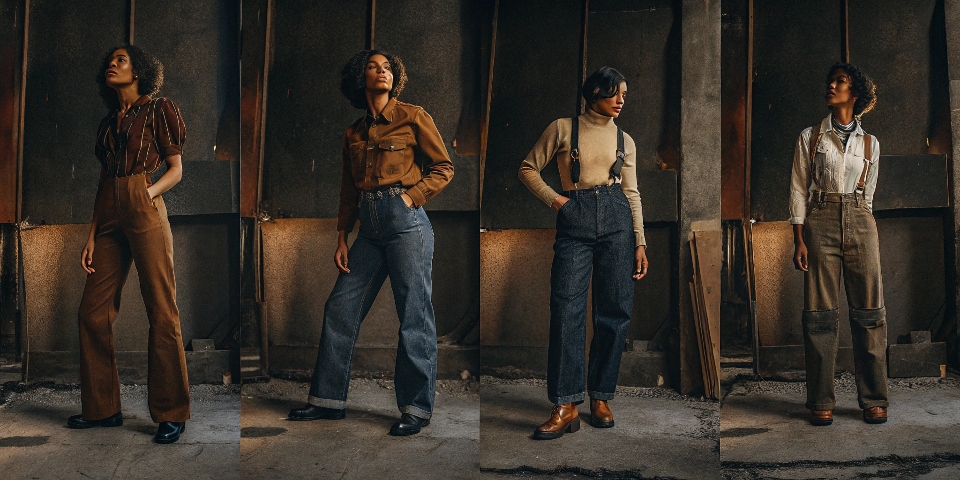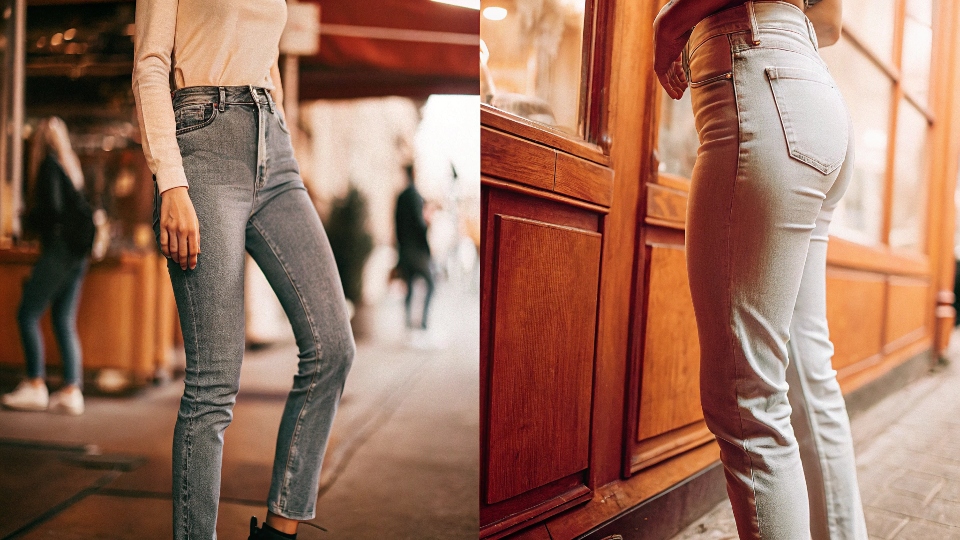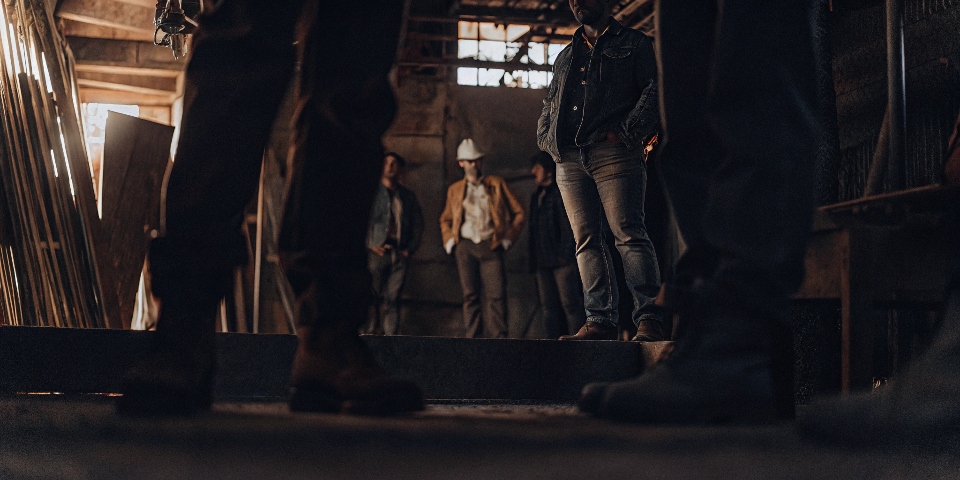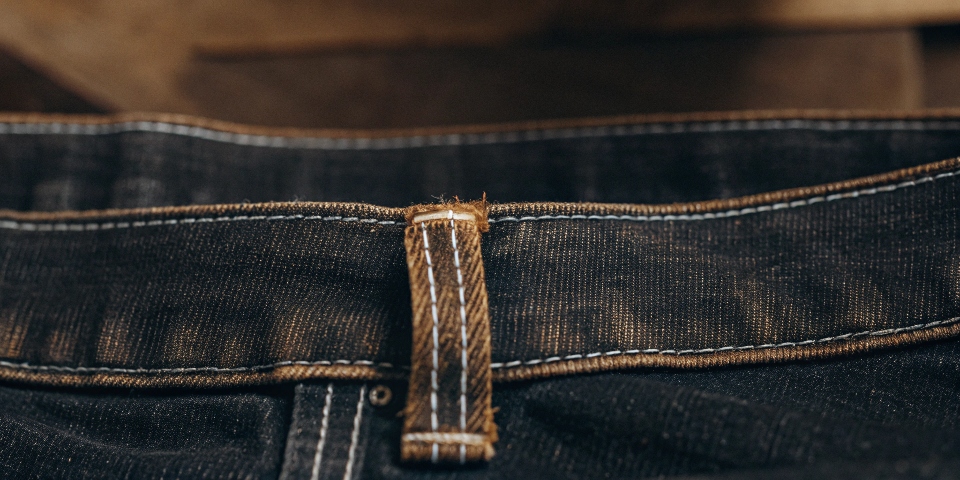You're trying to design the "next big thing" in denim. But every revolutionary idea seems to stray too far from what makes jeans, well, jeans. The classic five-pocket design feels less like a starting point and more like a creative boundary.
The classic jeans design hasn't changed much because it's a perfect blend of timeless function, universal fit, and cultural fashion. It was born from utility for the durable denim fabric and has proven to be an adaptable canvas for stylistic evolution.
For a designer like Dean, understanding this core DNA is crucial. It’s what separates a gimmick from a lasting design. I've spent my career working with this blueprint, and I can tell you that its strength lies in its details.
The original design was so effective that it doesn't need to be reinvented, only reinterpreted. It achieved a kind of perfection early on, balancing function and form in a way few other garments ever have. Let's break down why this simple design has endured for over a century.
How did jeans change over time?
You look at vintage photos and think jeans look basically the same. But you know the details tell a different story of work, rebellion, and high fashion. You need to understand this evolution to design for today's market.
Jeans evolved from pure workwear to a symbol of rebellion and then high fashion. The main changes were in the fit (from loose to skinny and back again), the wash (from raw to heavily distressed), and small details, reflecting each era's culture.
The five-pocket jean1 is a blueprint, but every generation has redrawn it in its own image. I've seen these cycles firsthand from my factory floor, watching trends emerge in the tech packs from top designers.It started as pure function—durable pants for miners who needed pockets for tools and rivets for strength. But then culture took over.
In the 1950s, stars like James Dean turned them into a symbol of youth rebellion. The 1970s saw the rise of bell-bottoms and flares, with washes getting lighter and more expressive. Then the 1980s brought designer denim to the forefront, with acid washes and tapered legs.
The biggest shift I've witnessed in my career was the rise of premium denim2 in the 2000s, where the wash became an art form and the skinny jean took over the world. The core design remained, but its expression was always changing.
| Decade | Key Change in Fit | Key Change in Finish | Cultural Significance |
|---|---|---|---|
| 1950s | Straight, anti-fit | Raw, dark indigo | Youth Rebellion |
| 1970s | Flared, bell-bottom | Lighter washes, embroidery | Peace, Love, Counter-culture |
| 1980s | Tapered, "Mom Jean" | Acid wash, heavy stone wash | Designer & Brand Mania |
| 2000s+ | Skinny, then Wide-leg | Distressed, complex premium washes | High Fashion & Individuality |
Why does Gen Z not wear skinny jeans?
Your brand's best-seller for the last ten years has been the skinny jean. Now, younger customers are calling them "cheugy," and sales are dropping. You're trying to figure out if this is a temporary trend or a permanent shift.
Gen Z is moving away from skinny jeans because their values prioritize comfort, gender-fluidity, and a '90s and Y2K vintage aesthetic. Looser fits like straight-leg, baggy, and flare jeans better align with this cultural shift away from restrictive styles.
This isn't just a random fashion moment; it's a major generational shift. I see it directly in my factory's production orders. Five years ago, close to 80% of the jeans we manufactured were skinny fits. Today, it's less than 30%, with straight-leg and baggy styles completely taking over. There are a few key reasons for this.
First, comfort is king. After years of athleisure and a pandemic spent in loungewear, restrictive clothing feels old-fashioned. Gen Z wants to move. Second, it's a rebellion. Every generation defines itself by rejecting the style of the one before it. The skinny jean was the absolute uniform of Millennials, so Gen Z is carving out its own identity with looser fits.
This also connects to the powerful revival of 90s and Y2K fashion, where baggy silhouettes3 were the standard. It all points to a fundamental change in what people want from their clothes: freedom and comfort.
Why have jeans never gone out of style?
You see fashion trends come and go, some disappearing in a single season. This is risky and expensive, making you wish for a product with true staying power. You wonder what gives jeans their incredible longevity.
Jeans have never gone out of style because they are uniquely adaptable. They serve as a durable work pant, a symbol of rebellion, a high-fashion statement, and a comfortable daily uniform. This ability to absorb and reflect culture makes them perpetually relevant.
The reason jeans are timeless comes down to the three pillars from your core insight: function, fit, and fashion. This is the magic formula. The function4 is in their DNA. They were born as workwear, made from tough cotton denim. That sense of durability and utility is still part of their appeal.
The fit is democratic. The basic five-pocket design is a perfect starting point. By simply changing the width of the leg—from skinny to straight to bootcut or flare—it can be adapted to flatter any body shape. But the most important pillar is fashion5. A pair of jeans is a blank canvas.
This is what I do every day in my laundry. We can take the exact same jean and make it look punk with heavy distressing, or premium and elegant with a dark, clean rinse. No other garment can completely transform its personality through its finish while remaining fundamentally itself. It's a style chameleon.
Why don't jeans last anymore?
You remember your old jeans lasting for a decade, getting better with every wear. Now, the pairs you buy or produce often develop holes or lose their shape after just a year. You feel like quality has vanished.
Modern jeans often don't last because of two main factors: the rise of "fast fashion," which prioritizes low cost over quality materials, and the huge demand for comfort, which means adding stretch fibers like elastane that break down faster than 100% cotton.
This is a constant conversation I have with my clients. It's a classic case of trade-offs. The single biggest reason for the decline in durability6 is the demand for stretch. Adding elastane (spandex) makes jeans incredibly comfortable from the very first wear, but those elastic fibers are fragile.
They are damaged by heat from the dryer and eventually break down, causing the dreaded "baggy knee" effect where the jeans lose their shape. The other factor is fast fashion7's pressure on price.To make jeans cheaper, brands use lighter-weight denim and lower-quality construction.
A pair of 10oz denim jeans with 3% elastane will never have the lifespan of a heavyweight 14oz, 100% cotton pair.As a manufacturer, we can produce incredibly durable, heritage-quality jeans, but it requires a commitment to better, more expensive materials.
| Factor | Durable "Heritage" Jeans | Modern "Comfort" Jeans |
|---|---|---|
| Fabric Content | 100% Cotton | Cotton/Polyester/Elastane blend |
| Fabric Weight | Heavyweight (12oz+) | Lightweight (8-11oz) |
| Primary Goal | Longevity & Character | Immediate Comfort & Lower Cost |
Conclusion
The classic jean design endures because it is a perfect blueprint. It masterfully balances function, fashion, and an adaptable fit, making it a timeless foundation for personal style across generations.
-
Explore the evolution of the five-pocket jean, a timeless piece that reflects cultural shifts and fashion trends over decades. ↩
-
Discover what sets premium denim apart and how it has transformed the fashion landscape, making it a staple in modern wardrobes. ↩
-
Discover insights on the resurgence of baggy silhouettes and how they reflect cultural shifts in fashion preferences. ↩
-
Understanding the function of jeans reveals their durability and utility, essential for appreciating their timeless appeal. ↩
-
Exploring the role of fashion in jeans shows how they can transform styles, making them a must-have in any wardrobe. ↩
-
Understanding durability factors can help you choose jeans that last longer and maintain their shape. ↩
-
Exploring the effects of fast fashion can reveal why quality often suffers in modern clothing. ↩

